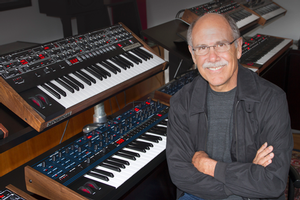AES Los Angeles 2016
Thursday, September 29, 6:00 pm — 7:30 pm (Rm 502AB)
Heyser Lecture
Presenter:Dave Smith, Dave Smith Instruments - San Francisco, CA, USA
Abstract:
The Richard C. Heyser distinguished lecturer for the 141th AES Convention is instrument designer, AES Fellow, and Grammy-winner Dave Smith.
Musical synthesizers first appeared in the 1960s – large modular beasts covered with cables. In the early '70s, portable monophonic instruments became available, leading to a gradual acceptance by musicians in popular music. In the late '70s, fully programmable polyphonic analog synths came out, and the synthesizer went mainstream. Things changed dramatically in the '80s as digital synths appeared: first the FM-based DX-7 and eventually the M-1 sample playback synth. From that point onward, digital was the norm. In the '90s, digital synths continued and were implemented in software as computers gained enough power for native signal processing. For 25 years, analog synths were generally not available. Things have changed in the last 10 years, though. Musicians started searching for old analog synths and began using them again. New analog synths became available. Modular synths are back, and very popular. Throughout this 50-year history of the synthesizer its impact on music of all genres has been very significant.
Please note: the Organ Concert start time has been delayed to 8:15 pm so that Heyser attendees could also attend the Organ concert if they so wished (and vice-versa).

